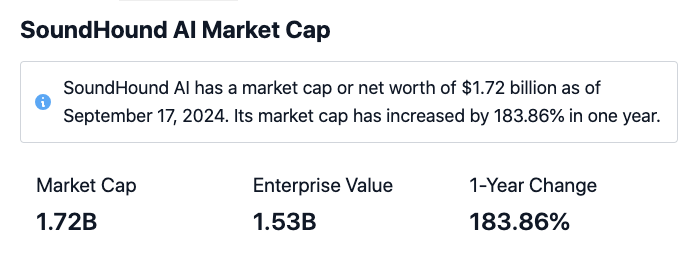Top 10 Tips For Understanding Market Volatility When Trading Ai Stocks, Ranging From Penny To copyright
Understanding the market’s volatility for AI trading in stocks is vital regardless of whether you’re dealing with penny stocks or copyright assets. Here are 10 essential strategies to make sense of the market and utilize it effectively.
1. Find out what triggers volatility
Learn about the main elements that affect the what level of volatility you can expect from your market.
Penny stocks: news from companies, earnings reports, and low liquidity.
copyright: updates to the regulatory framework and technological advancements in blockchain technology and macroeconomic trends.
Why: Knowing the drivers will help to anticipate any price swings that could occur.
2. Use AI to identify indicators of volatility
Use AI to track volatile metrics such as:
Implied Volatility (IV) shows potential price swings in the near future.
Bollinger Bands highlight the overbought/oversold situation.
The reason: AI can process these indicators faster and more precise than manual methods.
3. Check out for patterns of historical volatility
Tips: Make use of AI to spot patterns of volatility and price movements in the past.
Examples: copyright assets often exhibit higher volatility around significant events, like halving or forks.
What’s the reason? Understanding past behavior can help determine future trends.
4. Utilize the Sentiment Analysis
Tips: Make use of AI to assess the mood of news media, social media, and forums.
Pay attention to the niche market and small-cap discussions.
copyright: Study conversations on Reddit and Twitter.
Why: Sentiment shifting can cause an extreme fluctuations.
5. Automate Risk Management
Tips : Use AI to set position-sizing, trailing stop, and stop-loss rules for you automatically.
Automated protection against volatility spikes.
6. Trading Volatile Assets Strategically
Pick trading strategies suitable for markets that have high volatility
Penny Stocks: Invest in momentum trading strategies or breakout strategies.
Think about using a trend-following strategy or a mean-reversion strategy.
The reason: Matching the strategy you adopt to volatility could increase your success rate.
7. Diversify Your Portfolio
Tip: Spread the investments across various categories, sectors, or market caps.
The reason: Diversification lessens the effect of extreme volatility in a single region.
8. Watch Liquidity closely
Use AI tools for market depth analysis and also to compare bid-ask prices.
Why? Low liquidity in some copyright or penny stocks could cause volatility to increase and slide.
9. Stay Updated on Macro Events
Tip Use Feed AI models that incorporate data on macroeconomic trends, central bank policies, and geopolitical events.
Why: The ripple effect of market events can be observed in volatile assets.
10. Beware of emotional trading
Tips – Allow AI take decisions during times that are high-risk to remove emotional bias.
What’s the reason? Emotional reactions frequently cause poor decisions, for example, panic selling or over-trading.
Bonus Utilize Volatility to Your Benefit
Tips: Find opportunities to arbitrage rapidly or scalp trades in volatile surges.
When approached with discipline, volatility could provide lucrative opportunities.
With these strategies, you’ll be able better manage the volatility of markets and AI can optimize the strategy you use to trade penny stocks as well as copyright. Take a look at the best continue reading for using ai to trade stocks for blog tips including ai for copyright trading, trading chart ai, ai stock trading app, copyright ai, ai financial advisor, ai trading software, copyright predictions, copyright ai, free ai trading bot, trade ai and more.

Top 10 Tips For Ai Stock Pickers And Investors To Focus On Data Quality
AI-driven investment, stock forecasts and investment decisions require high-quality data. AI models are more accurate and reliable when they are based on top-quality data. Here are 10 top practices for AI stock-pickers to ensure the highest quality of data:
1. Prioritize Data that is Clean and well-structured.
Tip: Ensure your data is accurate, free from errors, and organized in a consistent format. This means removing duplicate entries, handling of missing values and maintaining integrity.
Why: Clean and structured data allows AI models to process data more efficiently, resulting in better predictions and fewer errors in making decisions.
2. The importance of timing is in the details.
Tips: Make use of up-to-date market data that is real-time for forecasts, such as the price of stocks, trading volumes Earnings reports, stock prices, and news sentiment.
Why: Timely data ensures AI models reflect current market conditions, which is crucial for making accurate stock picks, especially when markets are moving quickly, like copyright or penny stocks.
3. Data from reliable suppliers
Tip – Choose companies that have a great reputation and have been independently verified. These include financial statements, reports about the economy and price information.
Why: By using reliable sources, you reduce the possibility of data errors or errors that could undermine AI model performance. This could cause inaccurate predictions.
4. Integrate data from multiple sources
Tip. Combine different data sources such as financial statements (e.g. moving averages) news sentiment and social data, macroeconomic indicators as well as technical indicators.
What is the reason? By recording the various aspects of stock performance, AI can make better decisions.
5. Backtesting focuses on historical data
TIP: When testing AI algorithms it is essential to gather high-quality data so that they can be successful under a variety of market conditions.
Why is this: Historical data allows to refine AI models. It is possible to simulate trading strategies and assess potential returns to ensure that AI predictions are accurate.
6. Verify the Quality of data continuously
Tip: Audit and validate the accuracy of data frequently by looking for any inconsistencies and updating outdated data.
The reason: Continuously validating data ensures its accuracy and reduces the chance of making incorrect predictions using incorrect or outdated data.
7. Ensure Proper Data Granularity
TIP: Choose the best level of data granularity that will match your strategy. You can, for example employ regular data or minute-by-minute information for long-term investments.
Why: Granularity is important for the model’s goals. High-frequency data is useful to trade on the spot, but data that is more comprehensive and less frequent can be used to aid in long-term investment.
8. Incorporate Alternative Data Sources
Tips: Search for other sources of information, such as satellite images or social media sentiments or web scraping to find new trends in the market and.
The reason: Alternative data can give you a unique perspective on market trends. Your AI system will be able to gain competitive advantage by identifying trends which traditional sources of data could be unable to detect.
9. Use Quality-Control Techniques for Data Preprocessing
Tips. Utilize preprocessing techniques such as feature scaling normalization of data, or outlier detection to increase the quality of your raw data before you put it into AI algorithms.
The reason: Processing the data properly ensures that AI models are able to understand it correctly. This will reduce the chance of errors in prediction, and increase overall model performance.
10. Monitor Data Drift & adapt models
Tips: Track data drift to check if the characteristics of data changes over time and adjust your AI models accordingly.
What is the reason? Data drift can adversely affect the accuracy of models. By detecting data changes and adapting accordingly, your AI models will continue to be useful, especially in volatile markets such as copyright or penny stocks.
Bonus: Maintaining a feedback loop for data improvement
Tip Set up a feedback mechanism that allows AI algorithms constantly learn new data from performance outcomes and improve their data collection.
The reason: By utilizing a feedback loop that improves data quality and adapt AI models to current market conditions.
Quality of data is crucial in maximizing the potential of AI. AI models are more precise in their predictions when they have access to data of high-quality which is up-to-date and clean. This leads them to make better investment decisions. Follow these steps to ensure your AI system has the best data to make predictions, investment strategies and the selection of stocks. See the recommended best ai stocks recommendations for website recommendations including ai copyright trading bot, ai trading app, ai trading software, copyright ai trading, ai stocks, trading bots for stocks, best ai penny stocks, copyright ai, ai stock prediction, trading ai and more.

Leave a Reply